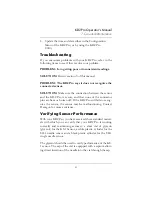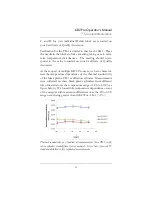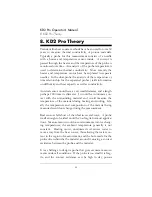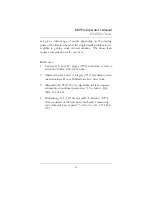
44
KD2 Pro Operator’s Manual
5. Good Practices
b. Allow time between readings for temperatures to re-
equilibrate. Fifteen minutes between readings isn't too
much.
c. If measurements are made in an oven or a freezer,
make sure the sample temperature is relatively con-
stant before the measurement starts. Measurements
made on a sample taken from an oven and cooling to
room temperature can show significant errors if the
cool rate is too fast.
d. When measuring thermal properties in the field,
allow a minute or so after sensor insertion for temper-
ature equilibration.
2.
Minimize contact resistance.
In granular materials, or in
solids where a hole has been drilled to accommodate the
sensor, there is an additional thermal resistance between
the heated sensor and the material into which the sensor is
inserted. This extra resistance is called a contact resistance,
and it decreases the thermal conductivity value registered
by the sensor. This effect can be minimized by applying
thermal grease to the sensor prior to inserting it as
described in the Decagon Application Note “Reducing
Contact Resistance Errors in KD2 Thermal Properties
Measurements” located in the literature section of
www.decagon.com/thermal. When a hole is drilled for the
sensor, make sure the fit of the sensor in the hole is as
tight as possible. Thermal grease can be injected into the
hole to improve contact.
Long read times also decrease the effect of contact resistance.
If you are measuring a sample that might give errors from
contact resistance, increase the read time from the default to
the maximum (10 minutes) for most accurate results. Finally,






























